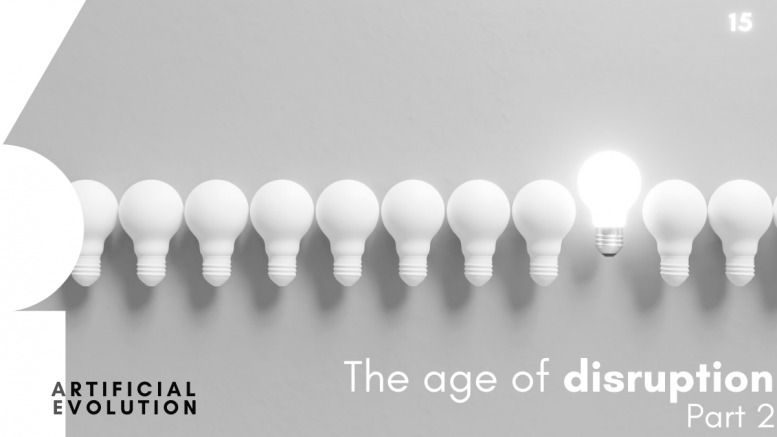Author’s note: The rapid change in communications and marketing is a daunting subject. To demonstrate the lightspeed changes in the industry, a lot of the research behind this piece was by a AI research bot team of AIWriter and AnswerThePublic. The goal of this two-part commentary is to drive curiosity and experimentation.
For context, read part 1 here
*****
Over the past decade, the marketing and comms industry has gone through a parabolic rise in innovation. Technology and data are have usually played triggers in this movement.
One realises that ultimately, no matter what technology is used, it uses one or more of the 3 core principles of marketing:
- Make it big & flashy
- Make it repetitive
- Make it part of life
As a way of elucidating the way marketing has reached almost science fiction levels, here’s a list of some (really) out there innovations that wowed us in the past decade.
- Drones: Tiny flying robots that can display messages are probably a wet dream for the sci-fi writers of the 60’s. With computational mechanical protocols and twinkly lights, drones became a mainstay for a lot of tech (gaming specifically) companies to promote their games through, what I must say, had fairly effective call to action.
- Stalker Ads: This is not a real term – just what I classify all digital ads that follow you around based on cookies. A mix of remarketing and programmatic ads that qualify and align impressions based on your online or sometimes offline (Know that feeling when you get ads about something you may have mentioned around your listening devi…. *ahem* your smart assistant).
- Digital influencers: If the barrage of “Like, follow and subscribe” messages blasted on our faces wasn’t enough, we found a huge growth of virtual influencers i.e. digital avatars propped up across Instagram and YouTube. From simple digital renderings to complete AI avatars, the rise of not-real-people influencing real people grew significantly. Unsurprisingly, even brands got into making their products into influencers by creating synthesized personalities. Heard of Barbie?To read more about virtual influencers, check out Virtual Influencers – Real Influence
- 3D mapped Projections: One of the most visually stunning ways to grab attention of large amounts of audiences has always been to 3D map and project a film on an existing building or structure. The film below gives some great examples that blew people away:
- Becoming utilities: Personally, my favourite kind of promotion. A clear (mostly) free use-case of the product or service or designing the product in a way that promotes itself based on its proximity makes it a part of your life seamlessly. From Ghostery and Grammarly’s free Chrome extension to the Juul vaporiser’s charger that fits snugly on any laptop with a USB – this makes the product/service have significant mental real estate.
- The “buy it or we’ll annoy you” freemium model: The biggest case study is perhaps streaming platforms YouTube and Spotify. Ask the users who use the free version of these apps, and they’ll tell you how they’re reaction-times have become cat-like to mute the stream when expecting an ad. With YouTube specifically, when you’re forced to watch 2, sometimes 3 ads before the 3 minute mark, it really does make you want to spend that Rs. 129 a month for a Premium membership.
- Branded NFTs: Everyone from McDonalds & Adidas to SnoopDogg and Sotheby’s has NFT art listed. A non-fungible token is essentially an entry in a blockchain verifying the owner of the entry. It could be anything from Art, music or even an article like this. With virtual worlds becoming the next frontier in consumer engagement, more brands will look to making their product integrated in our digital lives.
- Crowdfunding: After Kickstarter and Indigogo started product-based fund raising, it wasn’t long before platforms CrowdCube democratised early stage start-up funding. Ex OnePlus founder Carl Pei launched crowd-funding for his new-age electronics brand Nothing. For as little as 100 USD, investors and consumers alike could become a part of the Nothing ecosystem.
- Interactive wearables: Beyond the obvious design based brand recall of the Apple watch and the FitBit, brands have started to create apps for smart devices to become closer to our daily needs. Products and services like Apple Fit and Nike+ have become self-fulfilling cycles remarketing themselves beyond the immediate use-case of the product they sell.
- Holograms: Remember when PM Modi did a holographic stream of his speech across the country? Honestly, it was brilliant – concept and execution. Although holograms have had a slow start, with gradual acceptance of Augmented Reality major electronic giants like Samsung & Microsoft have thrown their hats in the metaphorical ring.
Who knows what’s next?
Ads transplanted into your dreams or progressively intimate product placements on OTT shows, it’s difficult to predict. Objectively though, as long as the ad or marketing campaign has made you remember or buy the product it’s advertising, it worked.
For everyone saying that ads are less important now than they were 20 years ago, I disagree. Ads are getting smarter and whether we like it or not, more invasive. Its about metamorphosis and evolution. Perhaps the mediums change from TV spots to physical NFTs on Tshirts, marketers will find a way to sell to you.
Sometimes when you least expect it.
Stay curious. Stay secure.
See you next week.
The views and opinions published here belong to the author and do not necessarily reflect the views and opinions of the publisher.



Be the first to comment on "The Age of Disruption: Part 2"